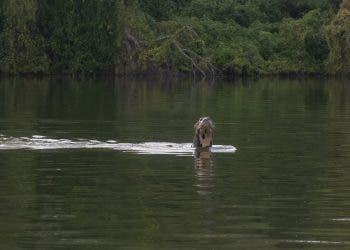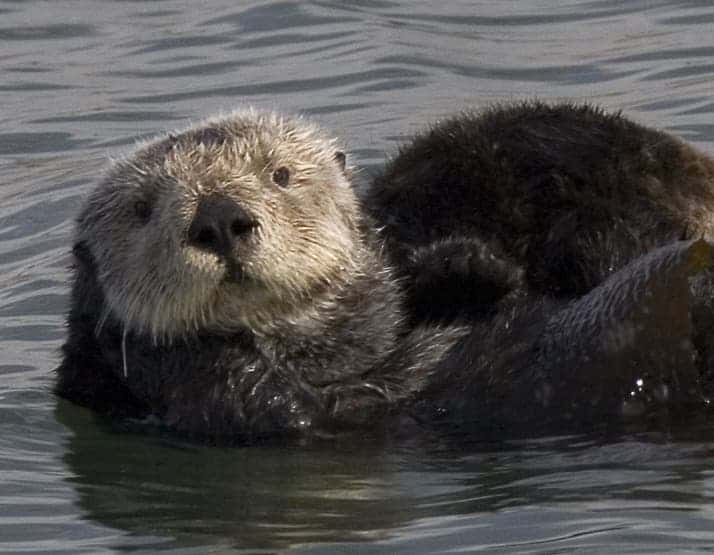Up until the last Ice Age, the world was packed with over-sized mammals which scientists call megafauna. There were giant sloths, short-faced bears, several species of tapirs, mammoths, and saber-toothed cats like Smilodon, to name a few. Among them was also a recently identified wolf-sized otter that lived about six million years ago. Its massive jaws allowed the animal to bite with a huge force, likely making it a top predator of its time. This is one otter you wouldn’t want to mess with.

The Siamogale melilutra fossils, as the giant otter has been dubbed, were unearthed in southwest China. Judging from the remains, researchers led by Jack Tseng, assistant professor at University at Buffalo, believe the otter weighed about 50 kg (110 pounds), making it bigger than any other living otter. Its firm jaws suggested the otter likely had a hefty bite but the results of the 3D simulation exceeded expectations. Even for its size, S. melilutra packed a surprisingly strong bite.
“We don’t know for sure, but we think that this otter was more of a top predator than living species of otters are,” Tseng says. “Our findings imply that Siamogale could crush much harder and larger prey than any living otter can.”
Tseng and colleagues also made 3-D, computerized models of the jawbones of 10 of the 13 known species of living otters, not just S. melilutra. The comparison of all the otter jaws uncovered a linear relationship between jaw stiffness and the animal’s size. Namely, smaller otters have sturdier jaws. This makes S. melilutra an outlier since its jaws, at least according to the present model, were six times sturdier than expected. This ancient otter was likely a formidable hunter, according to the paper published in Scientific Reports.
“At the time that the otter lived, the area where its remains were found included a swamp or a shallow lake surrounded by evergreen forest or dense woodland,” said Denise F. Su, a paleoecologist at the Cleveland Museum of Natural History and one of the leaders of the Shuitangba Project that discovered the fossil otter.

Today’s otters dine on a wide range of plants and animals from rodents to fish or crabs. We can’t tell what exactly S. melilutra used to eat but its powerful jaws suggest it could easily crush the shells of big mollusks or the bones of small mammals and birds.
“There was a diverse aquatic fauna at Shuitangba, including fish, crab, mollusks, turtles and frogs, as well as many different species of water birds, all of which could have been potential prey for S. melilutra,” Su said.
The powerful jaws likely made the ancient giant otter highly adapted to the wet and forested environment of South China where it had access to food other predators were barred from, such as big clams.
Beyond S. melilutra‘s diet, the study also paints a richer picture of the relationship between jaw strength and diet in animals in general. Scientists now learned that jaw strength correlated with size in living otters regardless of their meal choice whereas previously it was thought that more powerful jaws are found in creatures that eat harder foods. Tool use may explain this discrepancy — something which the primitive S. melilutra likely lacked. That’s strikingly similar to what happened to hominid skulls over the course of human evolution. By employing tools in their lives, our ancestors’ skulls transitioned from food munching units into a more ‘brainy’ role.
“Sea otters, for example, swim on their backs and use their chests as a platform for crushing their food with stones,” Tseng says.
“We think the anatomy means something because it doesn’t fall within the usual pattern that we see in other otters,” he says. “The strong jaws suggest that the primitive otter probably did not have the tool-using capability, and combined with the giant size, it was likely a top predator.”






